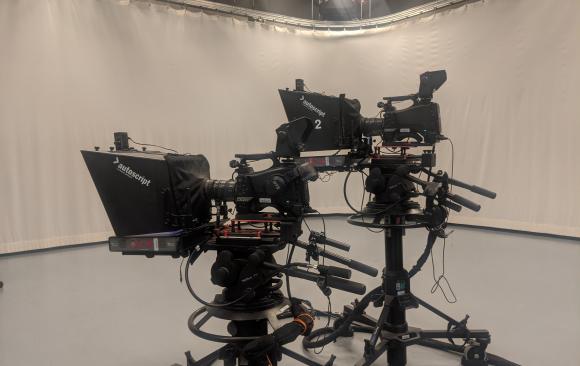


The most important piece of equipment in any studio production is the camera. At MNN, we work hard to maintain and service our studio cameras in both our 59th street and East Harlem facilities. During our excellent Studio Production classes at MNN we mainly teach our community how to use our cameras and don’t provide in-depth instruction on the proper care of these essential pieces of equipment. Here are some guidelines for the proper care of these delicate instruments.
The most important component of any camera is the glass - the lens which captures any image in the studio. The lenses on our cameras are very expensive - and very sensitive. There are no circumstances where you will need to actually touch the lens assembly.
First, the glass on any camera should never, ever be touched. The glass is treated with a very sensitive coating to reduce unwanted reflections and glare. Touching the lens will affect this coating and leave a permanent fingerprint.
Studio camera lenses are always controlled by the focus control, located on the operator’s left hand side, and the zoom lever on the right hand side (or, for the robotic cameras, by the robotic camera controller in the control room). There is never any reason to touch the actual lens assembly in front of the camera - doing so could adversely affect the delicate and precision gears and servos connected to the lens assembly.
With high definition cameras, thick cables are necessary to transport the video signal to our control rooms. These cables sometimes become tangled and cannot be easily disconnected. Please avoid trying to pass the cables over any other camera to reposition them. Almost all of our cameras have enough cable to be easily positioned anywhere in the studio without actually crossing the cables over each other and doing so can create problems with the camera functions. Please ask your studio event facilitator to position the cameras for you, rather than crossing the cables over each other, as this has caused frequent problems with both the cables and the cameras.
The pedestals for the cameras - sometimes referred to as the “tripods” - can be elevated or lowered to facilitate shooting from different angles, or to bring the lens to “eye level” with the talent. Because our cameras are in constant use, the hydraulics that make the heavy camera assemblies elevate or lower are not always at ideal levels, and attempting to lower or raise these camera assemblies risks serious hand injury. Please ask your facilitator to raise or lower the cameras to the desired level for safety reasons. Of course, the robotic cameras are elevated by a motor activated by the “ELEVATOR” lever on the robotic camera controller in the control room.
The pan and tilt handles that are attached to the cameras are designed for just that - panning and tilting the cameras, and not for actually moving the cameras to another location. On each of the pedestals that our cameras are affixed to (both the manual and robotic) there is a large round iron ring. Only move the cameras by these rings because strain on the pan and tilt bars can affect the performance of these functions negatively.
Proper care of the studio cameras will ensure that MNN’s cameras will be fully functional for the next production in our studios, and for your next production as well.